Not exactly quick, but not hard, either. In any case it’s delicious and worth making.
My friend Cherrie and I were finally able to find another class we could take with our favorite cooking teacher, Phillis Carey. Since the cooking school in San Diego closed some months ago – the one we attended often, Phillis is trying to find new venues to teach. But she’s always taught classes in other places and one is in Orange County, about once a month. (The downside is that the class is in a very cramped little space, hard, folding chairs, with a tray on our laps – i.e., not ideal.) This class was about Italian cooking at home.
Phillis is the queen of chicken breast cooking. She’s written an entire cookbook about it (her website is the only way to purchase it). And she continues to develop new and better ways to eat chicken. I don’t know about you, but I eat a lot of chicken and I love new/better ideas of ways to cook it. This one is worthy of a company meal – I might not go to the trouble just for a meal on my own.
The idea behind the oven fried part is that you lay the chicken breast (coated in eggs and bread crumbs) into a very little pool of hot oil in a rimmed pan and it sort of “fries.” How? Well, first you make a long, deep cut in the center of the boneless, skinless chicken breast half and open it up like a book. You don’t cut all the way through. Anyway, you fill the chicken breast (more on that in the next paragraph) and fold it together. Kind of squeezing it so it sticks together. Meanwhile, you will have heated the oven to 425° F. That’s HOT. Then you use a older, less attractive rimmed baking sheet (one that you don’t care how it looks and how the oil will mark it) and you heat olive oil (a tablespoon of oil per chicken breast) in that pan in the oven. When Phillis demonstrated this, after she put the baking sheet of oil into the oven to heat – it took about 4 minutes. It was smoking. That’s what it’s supposed to do. If you used canola oil (with a higher flash point) it wouldn’t smoke, and you can do that. It’s just that olive oil will give you a bit more flavor (more Italian, obviously). In the interim you will have coated the chicken breasts (dipped in beaten eggs and then a breadcrumb mixture that contains some Parm) and once the oil is smoking hot, you pull the oven rack out and gently – very gently – lay the chicken breasts, smooth side down (first) – in the hot oil. It will sizzle. If it doesn’t sizzle, then the oil didn’t get hot enough. That’s what creates the crust – you can see how beautiful it is in the photo at top. The chicken is baked in that hot oven for 7 minutes, then the breasts are turned over and baked another 6-8 minutes and they’re done. When the cheese (she used Fontina – a good melting cheese) begins to ooze out of the edges of the chicken you know it’s done. And you can serve it immediately, while it’s still hot as a pistol.
The filling – well, you could improvise if you wanted to. If you don’t like basil, use a different herb (fresh, though). If you don’t like Fontina, use Provolone or what you have on hand. A soft cheese, though, but not Jack or cheddar (tasteless). If you don’t like sun-dried tomatoes (these are the oil packed ones, drained) use fresh, but oven dried roasted tomatoes. Don’t use regular dried tomatoes – they’d be too firm even if you reconstituted them. And don’t use fresh tomatoes as they would give off too much liquid (would steam the chicken and you’d lose the whole point of the oven frying technique). She used prosciutto. You could use pancetta, but it won’t have the smoky flavor of prosciutto. But do remember that both of those Italian deli meats are salty. Use it judiciously.
So, you lay on a nice big leaf of basil on the open chicken breast “book.” Stack the filling on one side. Then you add the prosciutto. I’ve added into the recipe to cut it up in bite-sized pieces before laying it in the chicken. Phillis just laid a slice on the breast, but prosciutto kind of shreds when you try to cut it, so I think cut into pieces makes it easier to cut and eat it. Then the well-drained sun-dried tomatoes are added. I’d cut those up in small pieces also. THEN, you divide up the cheese and kind of cup it in your palm and place it on top of the filling. The other chicken breast half is laid over, pulled slightly and you press down (to compress the cheese) and so the edges of the chicken stick together. If you really wanted to do it right, brush the outer edge of the chicken with a bit of the beaten egg (used in the coating) to seal the edges. But it’s not really necessary to do that step.
The nice thing is that you can stuff the chicken a day ahead (covered, in the refrigerator). And you can coat the chicken an hour ahead (and refrigerate). So if you’re having guests, everything is ready except heating the oil and baking them. See? Easy, really. And it makes a beautiful presentation. That top turns a perfect golden brown.
Now, just a note about the CHICKEN. I buy my chicken breasts at Costco, and they’re big honkin’ breasts. Those are just too big for this recipe. So either buy smaller breasts (ideally about 6 ounces per serving), or if you use the big, big breasts, cut off the tender (you’ll do that anyway) and cut off some of the outer edges so you do end up with about a 6-ounce portion. If you were to use a bigger breast it will take longer to cook through and unless you’re feeding football players, they won’t eat it all. The chicken is very rich and filling.
What’s GOOD: the flavors are wonderful – very Italian for sure. I loved the crispy crust. I loved the oozing Fontina cheese in it. The flavor boost from the sun dried tomatoes was lovely. When I make it I will be sprinkling on just a tiny little bit of salt ONLY on the outside edges (where the prosciutto isn’t), as whatever chicken doesn’t have any filling needs just a hint of salt. It’s a beautiful presentation – serve on a platter if you want to with a sprinkling of Italian parsley and a few whole stems for color. The chicken is very rich, and is high in calorie with all those goodies in it and the oil it’s cooked in, too.
What’s NOT: only that it does take a bit of prep. But it’s not hard to do. Just a bit of time. The chicken probably won’t be great as leftovers. You’ll not be able to get the crispy crust the 2nd time around, so plan to eat it at the first sitting, if possible!
printer-friendly PDF and MasterCook 14/15 file.
* Exported from MasterCook *
Oven-Fried Parm-Crusted Chicken Breasts with Prosciutto and Cheese Filling
Recipe By: From a Phillis Carey cooking class, 9/2015
Serving Size: 4
4 pieces boneless skinless chicken breast halves
4 slices prosciutto — chopped
4 large basil leaves
1/4 cup sun-dried tomatoes, oil-packed — drained and chopped
1 1/2 cups Fontina cheese — grated (or use Provolone)
CRUMB MIXTURE:
3/4 cup dry Italian seasoned bread crumbs
1/2 cup Parmigiano-Reggiano cheese — grated (or Pecorino)
1 tablespoon fresh Italian parsley — minced
COATING and BAKING:
2 large eggs — lightly beaten with 1 T. water
1/4 cup olive oil — for the baking sheet
1/4 cup Italian parsley — chopped (garnish)
1. Using a sharp knife, butterfly the chicken breasts by slicing in half, horizontally, but not all the way through; just open it like a book. Lay on the prosciutto, a basil leaf and a tablespoon of the sun dried tomatoes on one side of the opened breast. Divide the cheese among the pieces, then fold top side over the filling. Press together firmly and try to seal the edges (chicken meat against chicken meat). May be refrigerated at this point up to a day ahead.
2. Preheat oven to 425°F. Combine the bread crumbs, Parm cheese and parsley on a shallow plate. Dip the chicken bundles in the egg mixture (keeping the edges together so they don’t open up) and then in the breadcrumbs, coating well. (At this point the chicken can be chilled for up to an hour.)
3. Once oven is at temperature, pour the olive oil (approx 1 T. per chicken breast) into a rimmed large baking sheet. Use an “old” one as the oil and the baking may discolor the pan. Place pan in the oven to heat – about 3-4 minutes. It will be VERY hot and the olive oil may be smoking slightly. Add the chicken, top side down and bake for 7 minutes. Turn the chicken over (very carefully) and continue baking another 6-8 minutes or until chicken is cooked through. The chicken is done when the cheesy mixture begins to ooze out of the seam. If you are baking more than 4 of these, use a separate oven and another baking sheet to roast the chicken. If you have a convection oven that has a convection/bake cycle, use that, same temp and same amount of time. Garnish with chopped parsley and serve.
4. It is best to use smaller chicken breasts for this – don’t include the chicken tender. If you buy very large breasts, trim some of the edges (and use for something else) to bring the size down to about 6-7 ounces per breast.
Per Serving: 983 Calories; 51g Fat (47.9% calories from fat); 107g Protein; 18g Carbohydrate; 1g Dietary Fiber; 380mg Cholesterol; 6745mg Sodium.





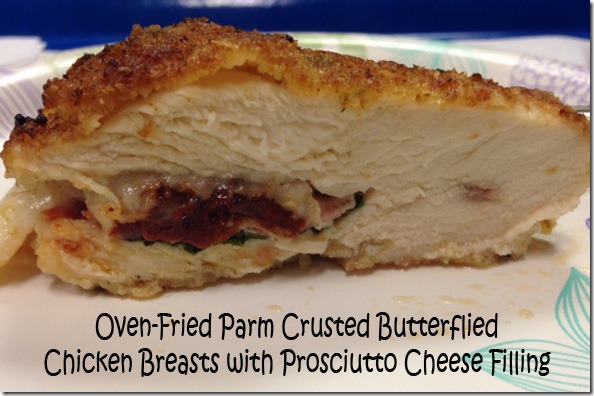

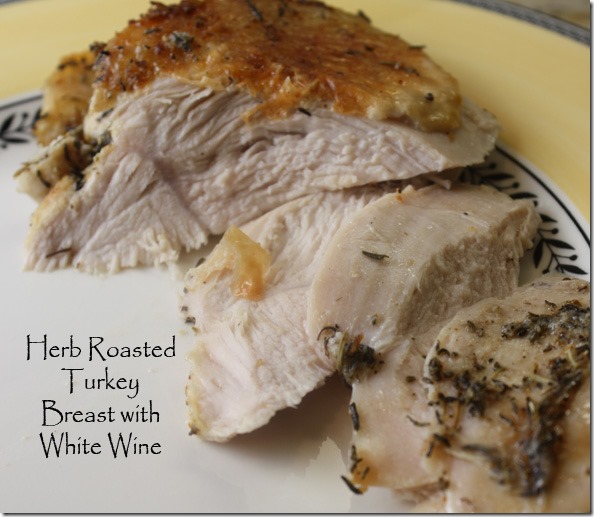
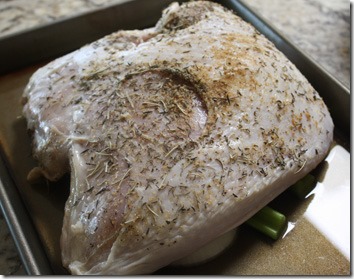
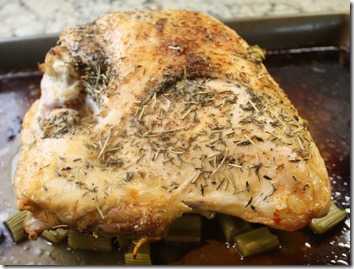
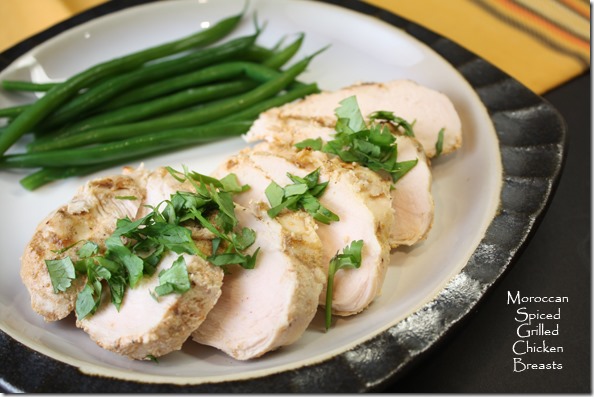
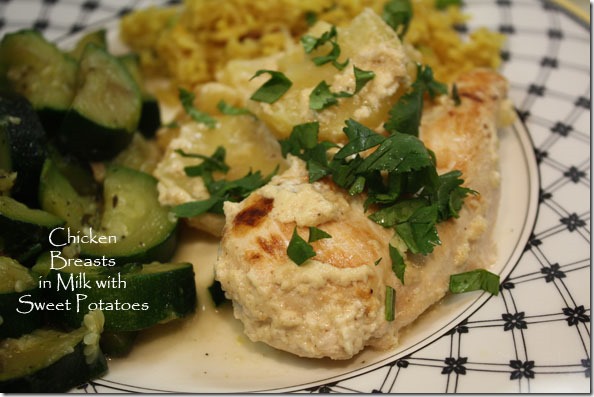
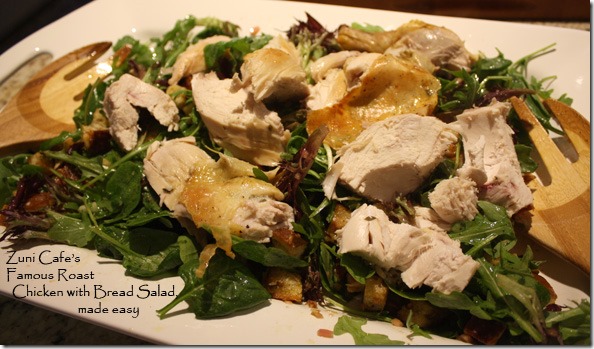
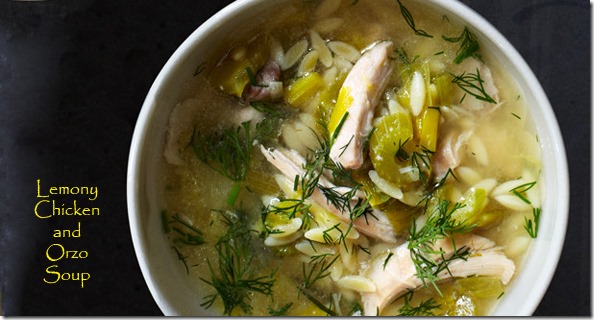
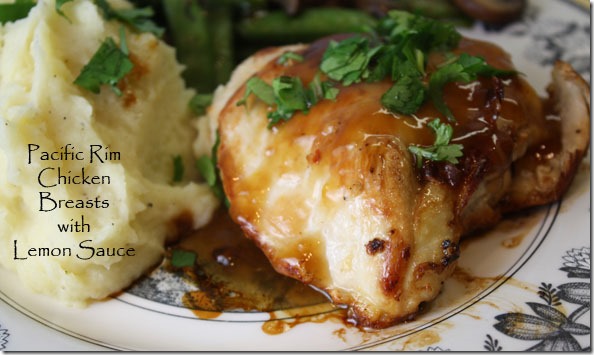
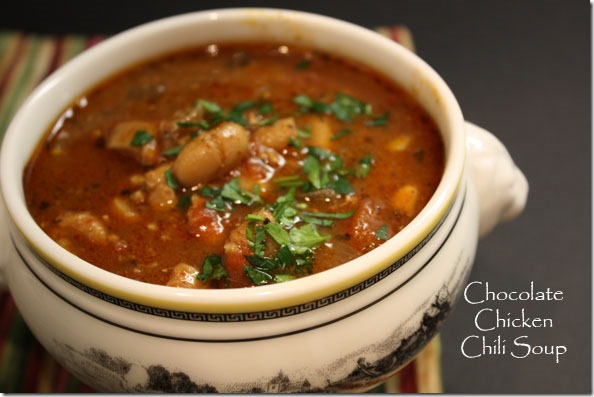
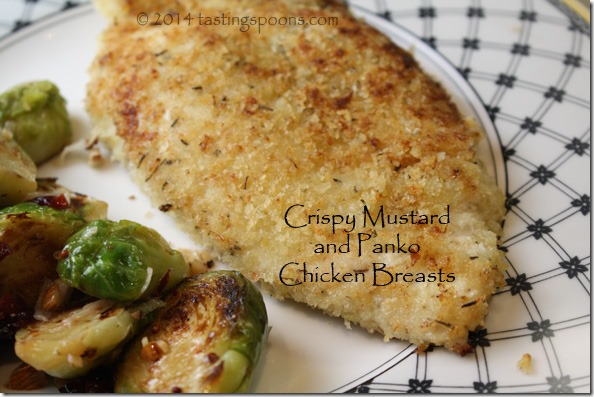
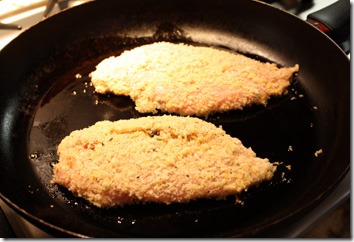
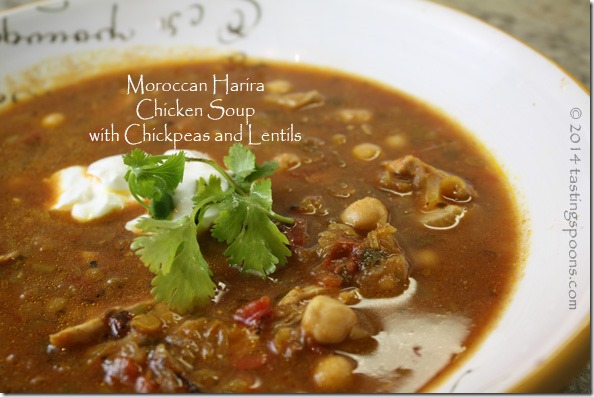
Leave a Comment!